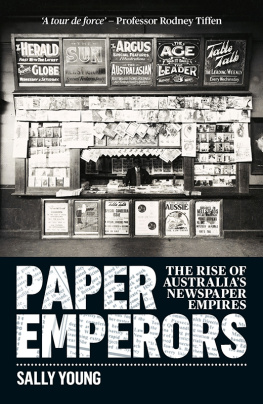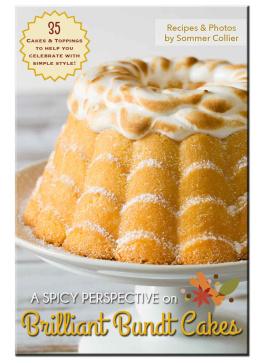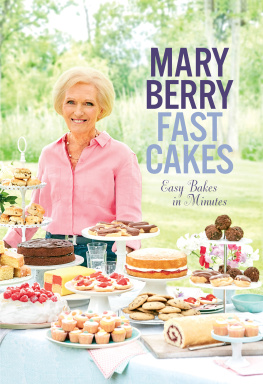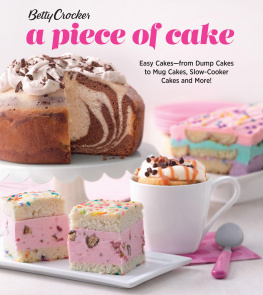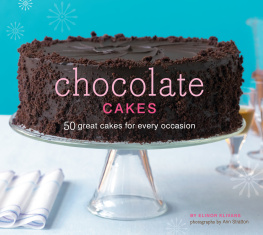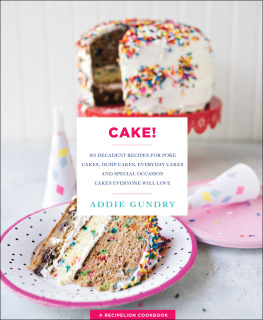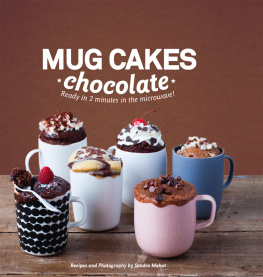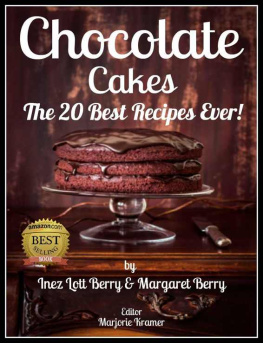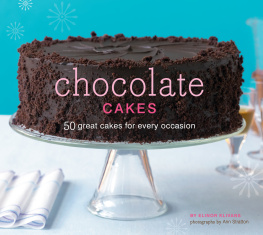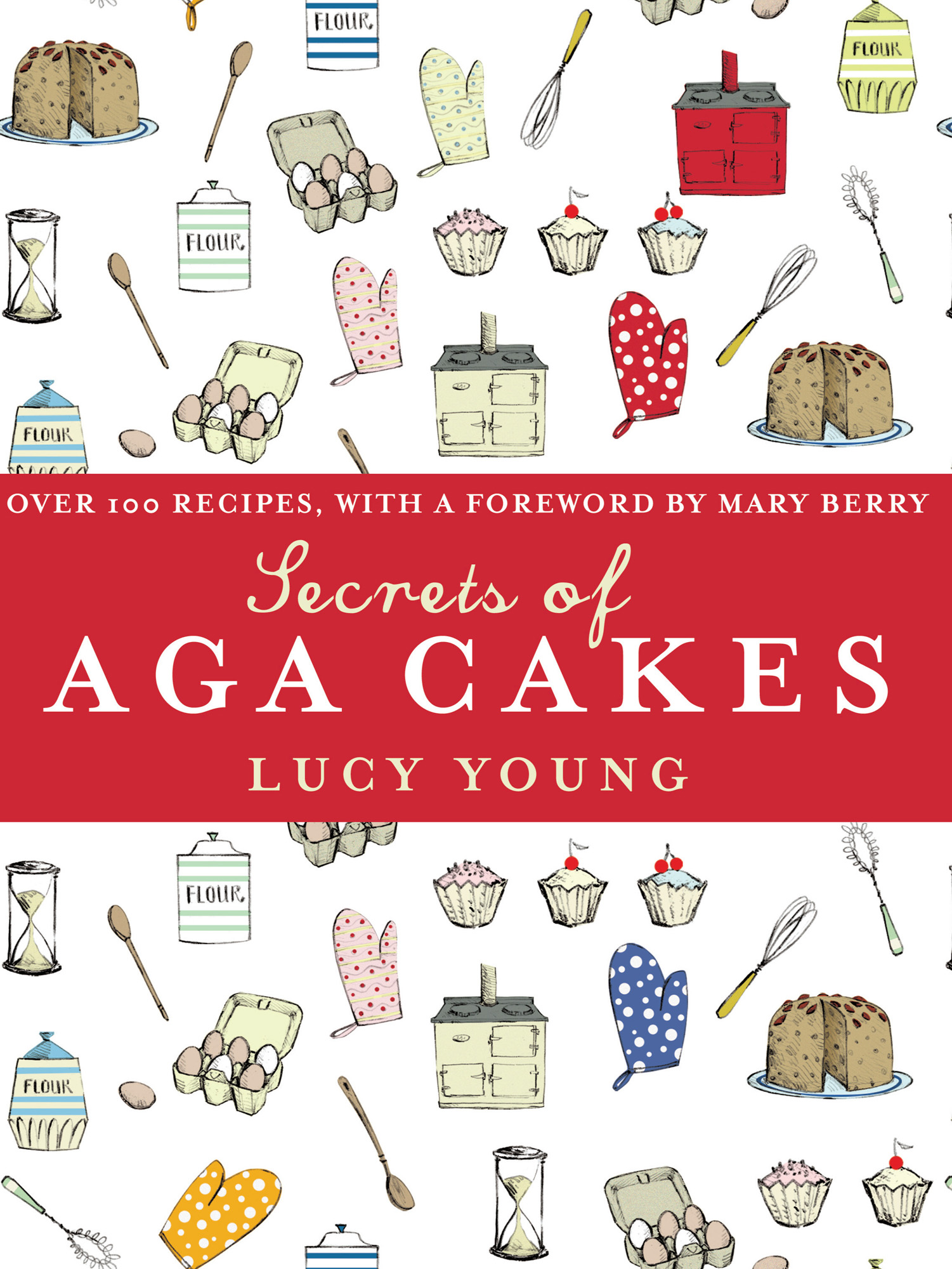Contents
About the Book
This is the first book for Aga owners devoted solely to cakes and sweet baking recipes. Cakes and biscuits can often be tricky to get right in the Aga but Lucy gives you over 100 foolproof recipes. Whether you are a keen baker or a complete beginner, this book has the recipes for you.
Simple cakes and traybakes
Chocolate
Traditional cakes
Baking with kids
Cupcakes and cookies
Coffee-shop cakes
The healthy option
Throughout the book Lucy gives clear, simple instructions and helpful hints for modern baking in the Aga. With advice on equipment, storing, freezing and general baking tips, Secrets of Aga Cakes really is the ultimate cake book and makes Aga cake baking absolutely foolproof.
Every recipe features conventional instructions too.
About the Author
Lucy Young is the new young Aga talent. She has a Cordon Bleu training and has worked with Mary Berry for over 17 years, helping create and test Marys recipes for books and TV and teaching at her very popular Aga workshops. Lucy has often appeared on the UKTV Food Channel and is regularly interviewed on radio. She is the author of Secrets from a Country Kitchen, also published by Ebury.
FOREWORD BY
Mary Berry
This wonderful book is the first glossy Aga Book to be totally dedicated to cake baking. It is crammed full of every sort of cake, biscuit, bun, teabread and traditional cake that you can think of. I have written many cake books, but never one with Aga instructions, so I especially welcome this book as the bible for all Aga cake bakers.
No one has more practical experience with the Aga and baking than Lucy I should know, she has been by my side for some 17 years. Together we have been running Aga Workshops at Watercroft and baking has always been an important part of each day. Sometimes baking in the Aga can be tricky, and it is specialised, but we have cracked it! Lucy has always been keen to try new, modern, young ideas as well as the traditional classics and this book has them all.
I think I have tasted just about every recipe in this book! Lucy would create and test them at home and bring them in. We would also often freeze them and serve them for garden open days for the National Garden Scheme charity, so they have been devoured by very many people. Yes, these recipes have been tried and tested many times they are not just recipes on paper.
In this book, Lucy gently holds your hand through each step, sharing her baking skills with you. There is no technical jargon, just how to make, how to bake and how to present beautifully follow all these instructions and her secrets and you will have success every time.
This book is certainly top of the wish list for all my Aga friends who are always on the phone asking us for advice! Hope you enjoy, it certainly is a book to be proud of.
Introduction
This is the first cake baking book for Aga owners, specifically giving you recipes for cakes, buns, biscuits and muffins all the lovely things you want to make, but have found tricky to make in the Aga. I am often asked at demonstrations, When are you writing an Aga cake book?, and the answer is NOW! The recipes in this book are therefore all sweet recipes this book teaches the Aga technique and makes cake baking simple.
Recipes range from the classic to the contemporary, with over 100 choices for both the keen cake baker and the complete beginner. There are ideas for all occasions, or simply fast cakes for the busy person, and even recipes that children will enjoy making themselves.
All the recipes have Aga and conventional cooking instructions, plus Ive given lots of secrets and tips that you can use to improve your cake-making. Enjoy!
AGA CAKE BAKING TIPS
Here are a few tips on using your Aga, together with some cake baking hints. These will help make your recipes perfect, stunning and delicious every time! It is important to follow the recipes accurately, so use the correct measurements, tins and position in the Aga. On these pages you will also find tips on knowing when a cake or biscuit is cooked and how to store and freeze them.
T HE A GA
Boiling plate is the left top plate.
Simmering plate is the right top plate.
Two-oven Aga: the top oven is the roasting oven and the bottom oven is the simmering oven.
Three-oven Aga: the top oven is the roasting oven, bottom right is the simmering oven and bottom left is the baking oven.
Four-oven Aga: top right is the roasting oven, top left is the simmering oven, bottom right is the baking oven and bottom left is the warming oven.
The grid shelf is the ridged shelf that comes with the Aga and stays in the oven.
The cold sheet is the sheet that comes free with your Aga and is a flat metal sheet the size of the ovens. This stays out of the Aga so it is always cold and is used to blank off the heat from the top of the oven to prevent the contents from burning.
When a runner is mentioned in a recipe, e.g. slide onto the second set of runners, they are counted from the top.
A small Aga roasting tin is half the size of the large Aga roasting tin, so a recipe for a small tin can be doubled to fit into the big tin.
G ENERAL A GA T IPS
For beginners, cook shallow cakes with short cooking times.
Two-oven Aga owners: bake on the grid shelf on the floor of the roasting oven with the cold sheet on the second set of runners above. This lowers the temperature of the oven, preventing the cake from burning. Very deep cakes need to be baked in an Aga Cake Baker.
Three- and four-oven Aga owners: bake in the baking oven, with the option of using the cold sheet if the cake is getting too brown.
Most cakes are simple to bake as long as baked in the correct oven, correct tin, correct position and for the right length of time.
Use the correct size tin stated in the recipe; if not, this will affect the cooking time.
Rich fruit cakes are baked in the simmering oven with great success.
Drop scones and Welsh cakes do not need a griddle pan as they can be cooked directly on the greased simmering plate.
Biscuits can be tricky to bake because of their high proportion of sugar, so watch carefully.
If making a whisked sponge, warm the sugar in the simmering or warming oven to give more bulk when whisking.
Do not open the door too often at the start of baking. Also, always close the door gently, do not slam it.
M AKING CAKES AND BISCUITS
Weigh in either imperial or metric, do not mix the two.
When making a cake by hand, use a large bowl and beat with a wooden spoon or plastic spatula until completely mixed and smooth.
When making cakes in a processor, use the metal blade and whiz until just mixed. Do not over-whiz otherwise the cake will lose its volume and will not rise in the oven, resulting in a flat cake.
Do not add too much baking powder. Use as stated in the recipe otherwise the cake will rise too high in the oven and, once removed, will collapse, causing the cake to have a dip in the middle.






